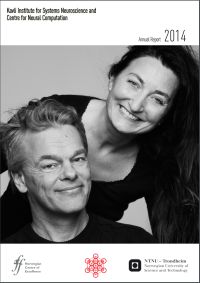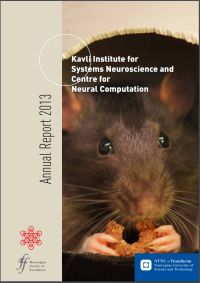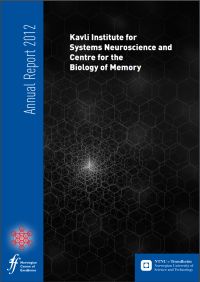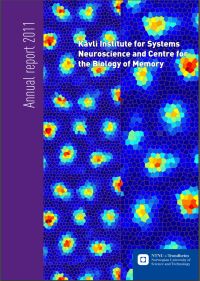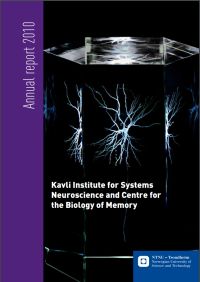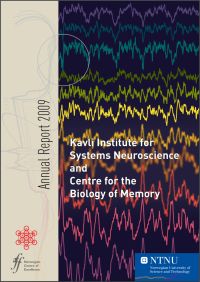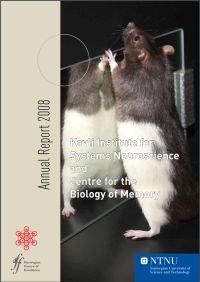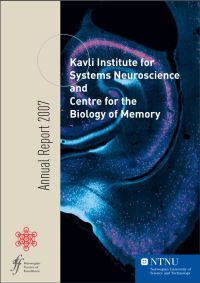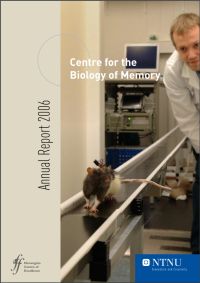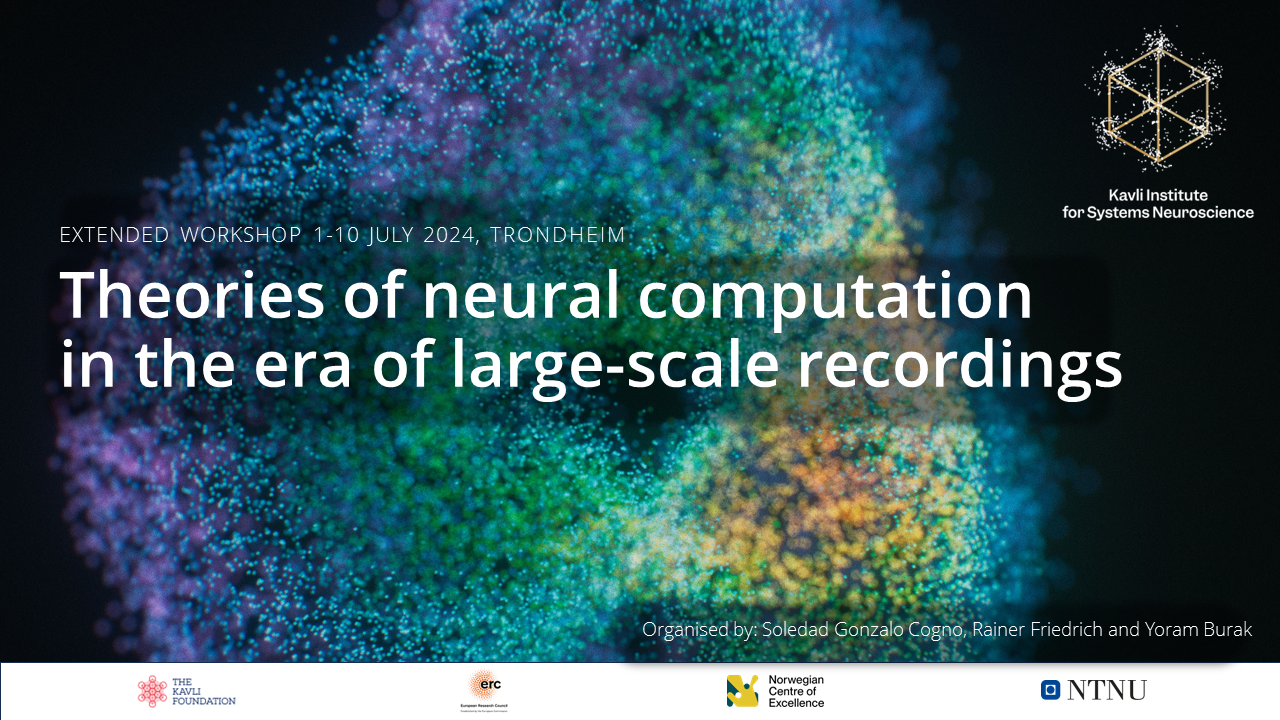How your Brain Experiences Time
Outreach
Brain Science Discoveries at KISN
Say hello to Mini2P - the brain explorer!
Mini2P is an open-source miniature 2-photon microscope brain explorer for fast high-resolution calcium imaging in freely-moving mice.
Get to know Mini2P.
A framework in your brain for organising the order of things

Scientists at NTNU’s Kavli Institute for Systems Neuroscience have discovered a pattern of activity in the brain that serves as a template for building sequential experiences.
A framework in your brain for organising the order of things (Norwegian SciTech News).
Minute-scale oscillatory sequences in medial entorhinal cortex (Nature)
Annual Report
Earlier annual reports
Stories from KISN
How your Brain Experiences Time
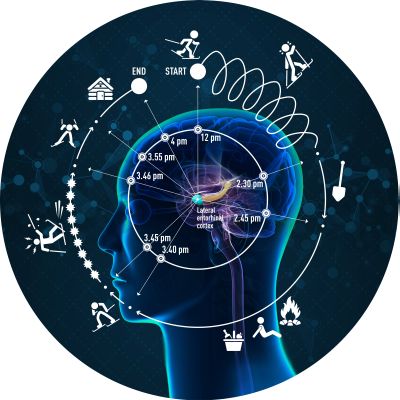
Researchers at the Kavli Institute for Systems Neuroscience have discovered a network of brain cells that express our sense of time within experiences and memories.
“This network provides timestamps to events and keeps track of the order of events within an experience”, says Professor Edvard Moser. This area of the brain where time is experienced is located right next to the area that codes for space.
Telling time
Clocks are devices created by humans to measure time. By social contract, we agree to coordinate our own activities according to clock time. Nevertheless, your brain does not perceive the duration in time with the standardized units of minutes and hours on your wristwatch. The signature of time in our experiences and memories belongs to a different kind of temporality altogether.
Over the course of evolution, living organisms including humans have developed multiple biological clocks to help us keep track of time. What separates the brain’s various timekeepers is not only the scale of time that is measured, but also the phenomena the neural clocks are tuned to. Some timekeepers are set by external processes, like the circadian clock that is tuned to the rise and fall of daylight. This clock helps organisms adapt to the rhythms of a day. Other timekeepers are set by phenomena of more intrinsic origins, like the hippocampal time cells that form a domino-like chain signal that tracks time spans up to 10 seconds precisely. Today we know a great deal about the brain’s mechanisms for measuring small timescales like seconds.Little is known, however, about the timescale the brain uses to record our experiences and memories, which can last anywhere from seconds to minutes to hours.
A Neural Clock for Experienced Time
A neural clock that keeps track of time during experiences is precisely what Albert Tsao and his colleagues at the Norwegian University of Science and Technology’s Kavli Institute for Systems Neuroscience believe they have discovered. By recording from a population of brain cells the researchers identified a strong time-coding signal deep inside the brain.
“Our study reveals how the brain makes sense of time as an event is experienced,” says Tsao. “The network does not explicitly encode time. What we measure is rather a subjective time derived from the ongoing flow of experience.”
“Our study reveals how the brain makes sense of time as an event is experienced,”
The neural clock operates by organizing the flow of our experiences into an orderly sequence of events. This activity gives rise to the brain’s clock for subjective time. Experience, and the succession of events within experience, are thus the substance of which subjective time is generated and measured by the brain.
 A neural clock for time. A network of brain cells that expresses our sense of time within experiences and memories. The area of the brain where time is experienced is located right next to the area that codes for space. Credit: Kolbjørn Skarpnes & Rita Elmkvist Nilsen / NTNU & Kavli Institute for Systems Neuroscience.
A neural clock for time. A network of brain cells that expresses our sense of time within experiences and memories. The area of the brain where time is experienced is located right next to the area that codes for space. Credit: Kolbjørn Skarpnes & Rita Elmkvist Nilsen / NTNU & Kavli Institute for Systems Neuroscience.
Time Space and Memory in the Brain
“Today, we have a fairly good understanding of the way our brains process space whereas our knowledge of time is less coherent”, Professor Moser says.
“Space in the brain is relatively easy to investigate. It consists of specialized cell types that are dedicated to specific functions. Together they constitute the nuts and bolts of the system”, he says.
In 2005, May-Britt and Edvard Moser discovered grid cells which map our environment at different scales by dividing space into hexagonal units. In 2014, The Mosers shared the Nobel Prize in Physiology or Medicine with their colleague and mentor John O’Keefe at University College London for their discoveries of cells that constitute the brain’s positioning system.
In 2007, inspired by the Mosers’ discovery of spatially coding grid cells, then-Kavli Institute PhD candidate Albert Tsao set out to crack the code of what was happening in the enigmatic lateral entorhinal cortex (LEC). This area of the brain is right next to the medial entorhinal cortex (MEC), where his supervisors, the Mosers, had discovered grid cells.
“I was hoping to find a similar key operating cell that would reveal the functional identity of this neural network”, Tsao says. The task proved to be a time-consuming project.
“There didn’t seem to be a pattern to the activity of these cells. The signal changed all the time, says Professor Moser.
It was only in the last couple of years that the researchers began to suspect that the signal was indeed changing with time. Suddenly the recoded data started to make sense.
“Time is a non-equilibrial process. It is always unique and changing,” Professor Moser says. “If this network was indeed coding for time, the signal would have to change with time in order to record experiences as unique memories.”
Technological advancements
The Mosers needed only to decode the signal of one single grid cell to discover how space is encoded in the in the medial entorhinal cortex. Decoding time in the lateral entorhinal cortex proved to be a more complex task. It was only when looking at activity from hundreds of cells that Tsao and his colleagues were able to see that the signal encoded time.
“The activity in these neural networks is so distributed that the mechanism itself probably lies in the structure of connectivity within the networks. The fact that it can be shaped into various unique patterns implies a high level of plasticity,” Professor Moser says. “I believe distributed networks and the combination of structures of activity may deserve more attention in the future. With this work, we have found an area with activity so strongly relating to the time of an event or experience, it may open up a whole new research field.”
The Shape of Time
The structure of time has long been a disputed topic by philosophers and physicists alike. What can the newly discovered brain’s mechanism for episodic time tell us about how we perceive time? Is our perception of time linear resembling a flowing river, or cyclical like a wheel or a helix? Data from the Kavli study suggest both are correct, and that the signal in the time-coding network can take on many forms depending on the experience.
In 2016, PhD candidate Jørgen Sugar joined the Kavli project to perform a new set of experiments that would test the hypothesis that the LEC network coded for episodic time. In one experiment a rat was introduced to a wide range of experiences and options for action. It was free to run around, investigate and chase bits of chocolate while visiting a series of open space environments.
“The uniqueness of the time signal during this experiment suggests that the rat had a very good record of time and temporal sequence of events throughout the two hours the experiment lasted,” Sugar says. “We were able to use the signal from the time-coding network to track exactly when in the experiment various events had occurred.”
In the second experiment, the task was more structured with a narrower range of experiences and options for action. The rat was trained to chase after bits of chocolate while turning left or right in a figure-8 maze.
“With this activity, we saw the time-coding signal change character from unique sequences in time to a repetitive and partly overlapping pattern,“ Tsao says. “On the other hand, the time signal became more precise and predictable during the repetitive task. The data suggest that the rat had a refined understanding of temporality during each lap, but a poor understanding of time from lap to lap and from the start to end throughout the experiment.”
Professor Moser says the study shows that by changing the activities you engage in, the content of your experience, you can actually change the course of the time-signal in LEC and thus the way you perceive time.
– BRIEF FACTS –
What is episodic memory?
Your ability to recall and mentally relive specific episodes from your past is called episodic memory. This is the type of memories that you can visualize and talk about. The episodic memory is explicit in the way that its content is always anchored to a time and a place. Simply stated, episodic memories are a composition of what (content), where (position) and when (time). The brain area called medial entorhinal cortex is particularly important for mapping positions in space. This study suggests that the lateral entorhinal cortex may be important for putting experience into a temporal context. Information from both of these structures come together in the hippocampus to form episodic memories.
Where is the brain’s subjective clock located?
The researchers recorded the time signal from a neural network in the lateral entorhinal cortex (LEC). LEC, the medial entorhinal cortex (MEC) and hippocampus (Hipp) are components of the hippocampal formation, which are located in the cortices of the left and right temporal lobes of the brain.
What is experienced time?
Subjective experience is the very substrate from which our concept of time arises. Time as we perceive it. Subjective time. Psychological time. Experienced time. Mind time. Episodic time. That time which flies when you’re having fun, which stretches when you are waiting, and which nearly comes to arrest in the split seconds of a catastrophe unfolding, is in its essence relational and relative to the multiple aspects of experience it is weaved into.
This is a press release for the paper in Nature titled
Episodic time coding in lateral entorhinal cortex
by Albert Tsao, Jørgen Sugar, Li Lu, Cheng Wang, James J. Knierim, May-Britt Moser, Edvard I. Moser.
Kavli Institute for Systems Neuroscience and Centre for Neural Computation, NTNU, Trondheim, Norway
Contact person:
Rita Elmkvist Nilsen
Head of Communications at the Kavli Institute for Systems Neuroscience
Mobile: (+47) 90 76 86 86
Office: (+47) 73 59 18 27
Email: rita.elmkvist@ntnu.no
Events
Events at NTNU, Trondheim 5th of Sept. 2024.
KISN Extended workshop
Take a look at the highlights from this summer's workshop: Theories of neural computation in the era of large-scale recordings, 1-10 July in Trondheim by Soledad Gonzalo Cogno, Rainer Friedrich and Yoram Burak.
Thank you to all our wonderful speakers, poster presenters, attendees, & staff for making this event a great success!
National PhD conference in Neuroscience
This year's NRSN conference at the beautiful Jegtvolden Fjordhotell! Don't miss out on the chance to develop your presentation skills, listen to exciting keynote lectures, network with other neuroscientists, and fun social activities ![]()
![]()
Also open for postdocs and MSc students!
![]() Register now by the 20th of August!
Register now by the 20th of August!
Read more on our website.
Selected media
The scientists at the Kavli Institute take part in various activities for communicating science to the public. The tools of the trade for communicating within the science community, like peer-reviewed journals and conference proceedings, are not good sources of knowledge for the public. Rather it’s through popular media, like online video platforms, television, social media, radio, podcasts, newspapers and magazines, as well as popularized talks and debates taking place in the public, that the majority of citizens gain knowledge and advice about science.
Popular science communication demands a translation of both complexity, language and dissemination form, without compromising central scientific aspects. By explaining scientific relationships in a straight-forward language and contextualizing scientific facts within issues of public interest and concern, our scientists aim at not only translating information and facts into publicly accessible knowledge and understanding, but also at providing a vocabulary that allows the broader public to engage in and join discourses about local and global issues that involve both risks and benefits, and in which every citizen is a stakeholder.
These insights represent the fundament for the institute's public outreach activities and science communication plan.
Starmus represents an innovative approach to boosting public understanding of science, inviting citizens to engage with and participate in scientific discourses, by bringing together the very best of science and art into a weeklong popular science dissemination festival. The festival is pulling thousands of visitors, and is covered by major media houses across the world.
In 2016 Edvard Moser participated in the Starmus festival III held in Tenerife, with a popular science lecture on grid cells. Edvard and May-Britt Moser have since been instrumental in bringing the Starmus initiative to Trondheim (2017).
 Popular speakers at the Starmus III festival in Tenerife (2016). Edvard Moser, sixth from left. Photo credits: Max Alexander
Popular speakers at the Starmus III festival in Tenerife (2016). Edvard Moser, sixth from left. Photo credits: Max Alexander"The Grand Narrative" is an animated story about how we find our way in the environment, and why navigation is essential for life.

Into Whiteness is a story of how your ability to find your way in the environment and to remember your history, arise from activity in neural circuits deep within your brain. It is also the story of what happens when these neurons that underpin memory and navigation start dying in Alzheimer’s disease. Learn more about Into Whiteness
New York Times A Sense of Where You Are
Nature Neuroscience: Brains of Norway
Huffington Post The Incredible True Tale Of “The Queen Of Neuroscience” And Her Nobel Prize
Neurosciencestuff A "light switch" in the brain illuminates neural networks
Science Magazine Beam me up, Ratty
Science news Meet 10 scientists who are making their mark
The Guardian How the brain navigates: science Nobel prize special (podcast, 52:20)
Kavli Institute for Systems Neuroscience A journey into the entorhinal cortex (video, 2:51)
Körber Prize May-Britt and Edvard Moser – Winner of the Körber European Science Prize 2014 (video, 9:29)
Skavlan Medicinpriset Maj-Britt och Edvard Moser hos Skavlan (video)
New York Times A Brain's GPS (video, 6:47)
Edvard Moser's Nobel Lecture Grid Cells and the Entorhinal Map of Space
May-Britt Moser's Nobel Lecture Grid Cells, Place Cells and Memory
Grid cells for Young Minds
Frontiers for Young Minds: Can grid cells help us understand the brain?
SUPPORT THE BRAIN RESEARCH
You are most welcome to support the brain research at the Kavli Institute for Systems Neuroscience led by May-Britt Moser and Edvard Moser.
The Research Fund of the Kavli Institute for Systems Neuroscience has the sole purpose of providing direct financial support for the brain research.





